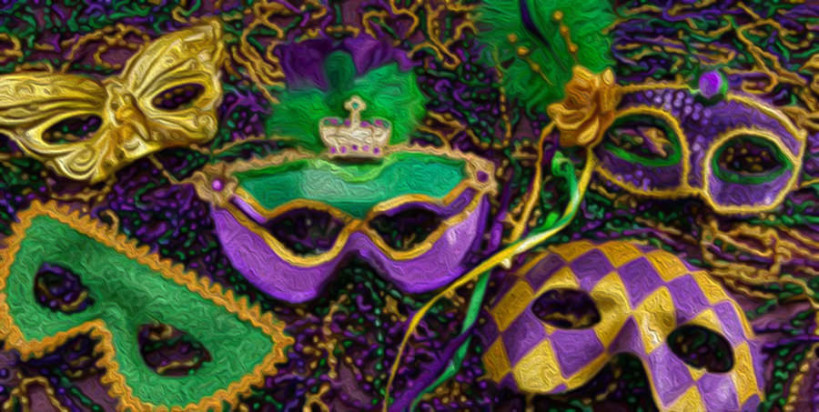Today is Mardi Gras – Laissez les bon temps roulez! (Let the good times roll) Being from South Louisiana this time of year has always been special to me. Now usually when you think of Mardi Gras you think of big parties, great food, elaborate floats, masks, beads, king cakes, second lines, great food (yes I said it twice – have you had food in South Louisiana?) and maybe some other stuff we don’t need to get into here. To me Mardi Gras is all of those things plus it was always like a big family reunion and we’d get to see all of our friends and we were almost guaranteed to make at least a couple of new friends.
At camp, we have Mardi Gras lunch each term and I always think about those big parties back home. Some LT’s and staff second line into the dining hall throwing out beads, we get to sit down with our friends (some new and some old), and we have some of Chef Doan’s great food. I always love meals at camp because of the family style service. There is something about sitting down together and the counselor serving up the plates, the singing at lunch, talking about the day to come, or what happened during the day that really makes it feel like home.
I also wanted to share the real meaning of Mardi Gras. Mardi Gras literally means “fat Tuesday” in French. Traditionally, it is the day for eating up the last of the rich foods that remain in the house and for having a big celebration before 40 days of discipline and repentance known as Lent which ends at Easter. It is also known as Shrove Tuesday and is followed by Ash Wednesday which is the beginning of Lent.
Mardi Gras or boeuf gras (fatted calf) as it was known then, first came to the French Colonies through the French house of the Bourbons. The first Mardi Gras in the colonies was actually celebrated in what is now Mobile, AL. Mike Busby was born in Mobile and he likes to kid me about Mardi Gras starting there, but I say New Orleans did it right. Mardi Gras began being openly celebrated in New Orleans in the 1730’s. From here several of today’s traditions grew. Three of my favorite traditions are the throwing of beads, the second line and king cake.
The origin of bead throwing started with the meaning of the three original colors of beads. The color of the beads was determined by the king of the first daytime Carnival in 1872. He wanted the colors to be royal colors – purple for justice, gold for power and green for faith. The idea was to toss the color to the person who exhibited the color’s meaning.
Second line is a tradition in brass band parades in New Orleans. The “main line” or “first line” is the main section of the parade, or the members of the actual club with the parading permit as well as the brass band. Those who follow the band just to enjoy the music are called the “second line.” The second line’s style of traditional dance, in which participants walk and sometimes twirl a parasol or handkerchief in the air, is called “second lining.”
The King Cake represents the three kings who brought gifts to Jesus on the 12th night of Christmas. It often has a plastic baby baked inside to represent Jesus and whoever gets the baby has to make the next King Cake or host the next party. For out of town parties often the one who gets the baby is considered the King or Queen of the party.
And that is a little about Mardi Gras. I’m going to find some crawfish! Talk to y’all soon and Laissez les bon temps roulez!


Comments
Thanks JEB! It’s always good to reflect back on what makes these holidays what they are. Sometimes we get inundated with the commercialism and capitalism of what the holiday has become and need to be reminded of its origins. PASS THE GUMBO!
Thanks Devin!